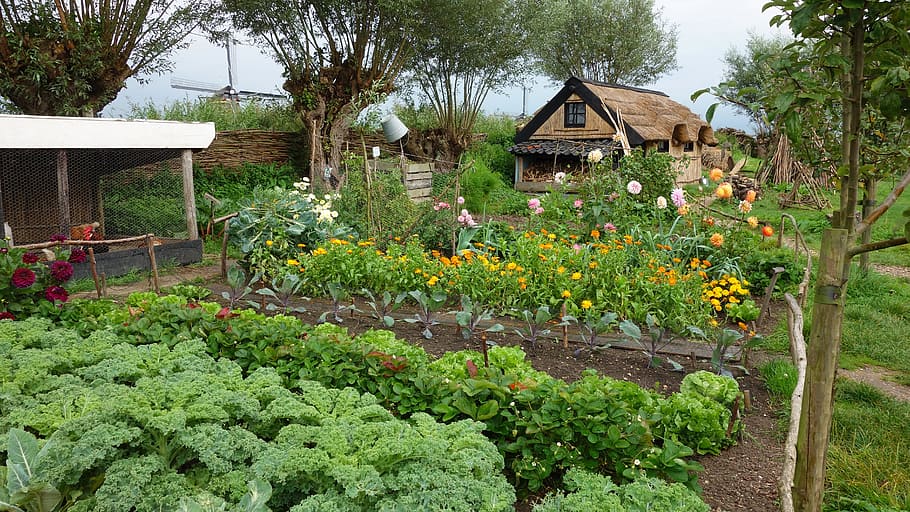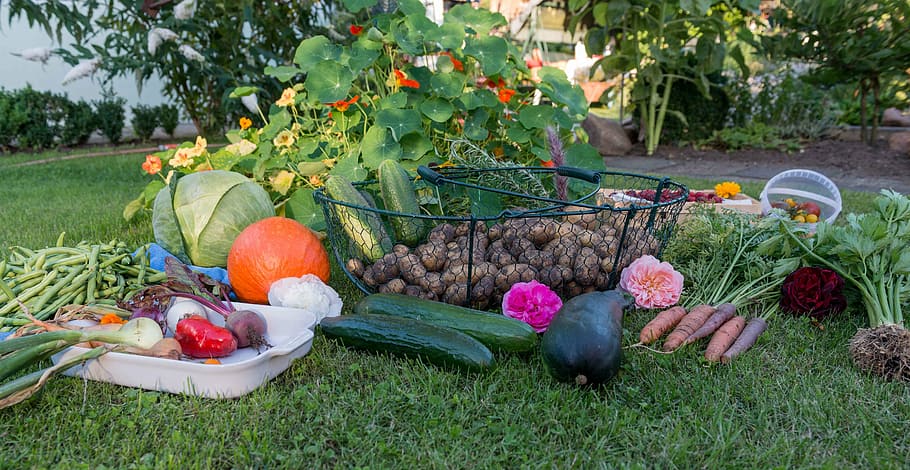By Bevin Cohen
I’ve enjoyed gardening for most of my life. As a young kid I used to grow radishes in a flowerpot on the balcony of my grandmother’s apartment. Radishes are a perfect crop for a kid; they grow fast, they’re colorful and they make a nice little snack. When I got older, I fell in love with the garden of a close family friend. It was a husband and wife team. On one side of the garden, he grew all sorts of tasty fruits and vegetables, and on her side was the most diverse and colorful collection of herbs and flowers I had ever seen. The buzzing of bees would fill the summer air while I munched on fresh green beans, cucumbers, and cherry tomatoes.

This fascination with plants has carried over into my adult life and nowadays I spend much of my time outdoors – gardening, foraging or just sitting in the shade enjoying the sights and sounds of Nature’s endless dance. There’s so much joy to be found in the garden, from the vibrant colors of newly opened blooms to the fragrant aroma of fresh herbs. The flavors of homegrown produce are unmatched by anything available at the supermarket. In the garden is where we find life’s greatest treasures.
For the past ten years or so, I’ve tried to share my love of gardening with folks, through classes and workshops as well as in a handful of books that I’ve written, and even in a newly launched podcast, appropriately dubbed Seeds & Weeds. I want people to be just as excited about the world of plants as I am. One subject that seems to generate quite a bit of excitement is seed saving. Even amongst experienced gardeners, I’ve found that the saving of seeds isn’t as common as one might expect it to be. How can we have a garden without seeds?  To me, saving seeds is as natural as planting seeds, but it’s a practice that has fallen to the wayside on many gardeners’ annual to-do lists. I suppose it is easy to just buy new seeds each year, but homegrown seeds will perform better than commercially purchased varieties; they’ve begun to adapt to our gardens. If we think about it, all that our plants truly want to accomplish is the production of seeds to ensure the next generation of plants, and they’ll do whatever it takes to make sure this happens. Seeds harvested from our own gardens are adjusting to our microclimates, pest and weed pressures, and even our gardening techniques. They’re making themselves at home. By saving the seeds from our best performing plants, we’ll get even better plants next season. Whether it’s the most beautiful flower, the most fragrant herb or the tastiest tomato you’ve ever had, selecting for the traits that you enjoy will ensure that those traits are passed along into the next generation.
To me, saving seeds is as natural as planting seeds, but it’s a practice that has fallen to the wayside on many gardeners’ annual to-do lists. I suppose it is easy to just buy new seeds each year, but homegrown seeds will perform better than commercially purchased varieties; they’ve begun to adapt to our gardens. If we think about it, all that our plants truly want to accomplish is the production of seeds to ensure the next generation of plants, and they’ll do whatever it takes to make sure this happens. Seeds harvested from our own gardens are adjusting to our microclimates, pest and weed pressures, and even our gardening techniques. They’re making themselves at home. By saving the seeds from our best performing plants, we’ll get even better plants next season. Whether it’s the most beautiful flower, the most fragrant herb or the tastiest tomato you’ve ever had, selecting for the traits that you enjoy will ensure that those traits are passed along into the next generation.
For several years, my seed work was centered around seed libraries, which are public seed dispersal hubs that are often housed within public libraries. These are great programs that help get seeds into the hands of the people that need them the most. I would visit many of these libraries in the spring to help them get their season off on the right foot, and then again in the fall to teach them how to save the seeds from their harvests.  While my focus with these programs was providing communities with seeds to grow food, the numbers at the end of each season showed that participants were more interested in growing herbs and flowers than they were fruits and veggies. Maybe it was due to limited growing space, or just personal preference, but either way, I had to adjust my seed saving curriculum to match the needs of the growers in attendance at my workshops. This was fun for me, since I had to refresh myself on the different equipment and techniques needed to process these often very small seeds, and I was reminded of something I learned many years ago, as a young boy munching on cucumbers in someone else’s garden. Everyone likes to grow something different, and it’s these differences that make every garden special. Lean in and grow whatever you love and you’ll harvest baskets full of joy for years to come.
While my focus with these programs was providing communities with seeds to grow food, the numbers at the end of each season showed that participants were more interested in growing herbs and flowers than they were fruits and veggies. Maybe it was due to limited growing space, or just personal preference, but either way, I had to adjust my seed saving curriculum to match the needs of the growers in attendance at my workshops. This was fun for me, since I had to refresh myself on the different equipment and techniques needed to process these often very small seeds, and I was reminded of something I learned many years ago, as a young boy munching on cucumbers in someone else’s garden. Everyone likes to grow something different, and it’s these differences that make every garden special. Lean in and grow whatever you love and you’ll harvest baskets full of joy for years to come.
Join Bevin on Tuesday, August 22, at 1pm Eastern for the webinar: Saving Our Seeds: Herbs, Flowers, and Veggies. Our webinars are free to The Herb Society of America members and $7.50 for guests. Become a member today, and enjoy all of our webinars for free along with access to the webinar library with over fifty program titles. To register, visit https://www.herbsociety.org/hsa-learn/herb-education/hsa-webinars/
Photo Credits: 1) A flower and vegetable garden (PxFuel); 2) People sorting seeds at a seed library (Public Domain); 3) A bountiful garden harvest (Wallpaper Flare); 4) Bevin Cohen (courtesy of the author)
 Bevin Cohen is an award-winning author, herbalist, owner of Small House Farm, and host of the popular Seeds & Weeds podcast. He offers workshops and lectures across the country on the benefits of living closer to the land through seeds, herbs, and locally grown food. Bevin is a food and garden writer whose work has appeared in numerous publications including Mother Earth News, Modern Farmer Magazine, and The Journal of Medicinal Plant Conservation. He’s the author or editor of more than ten books, including Saving Our Seeds and The Artisan Herbalist. Learn more about Bevin’s work at www.bevincohen.com
Bevin Cohen is an award-winning author, herbalist, owner of Small House Farm, and host of the popular Seeds & Weeds podcast. He offers workshops and lectures across the country on the benefits of living closer to the land through seeds, herbs, and locally grown food. Bevin is a food and garden writer whose work has appeared in numerous publications including Mother Earth News, Modern Farmer Magazine, and The Journal of Medicinal Plant Conservation. He’s the author or editor of more than ten books, including Saving Our Seeds and The Artisan Herbalist. Learn more about Bevin’s work at www.bevincohen.com
Leave a Reply